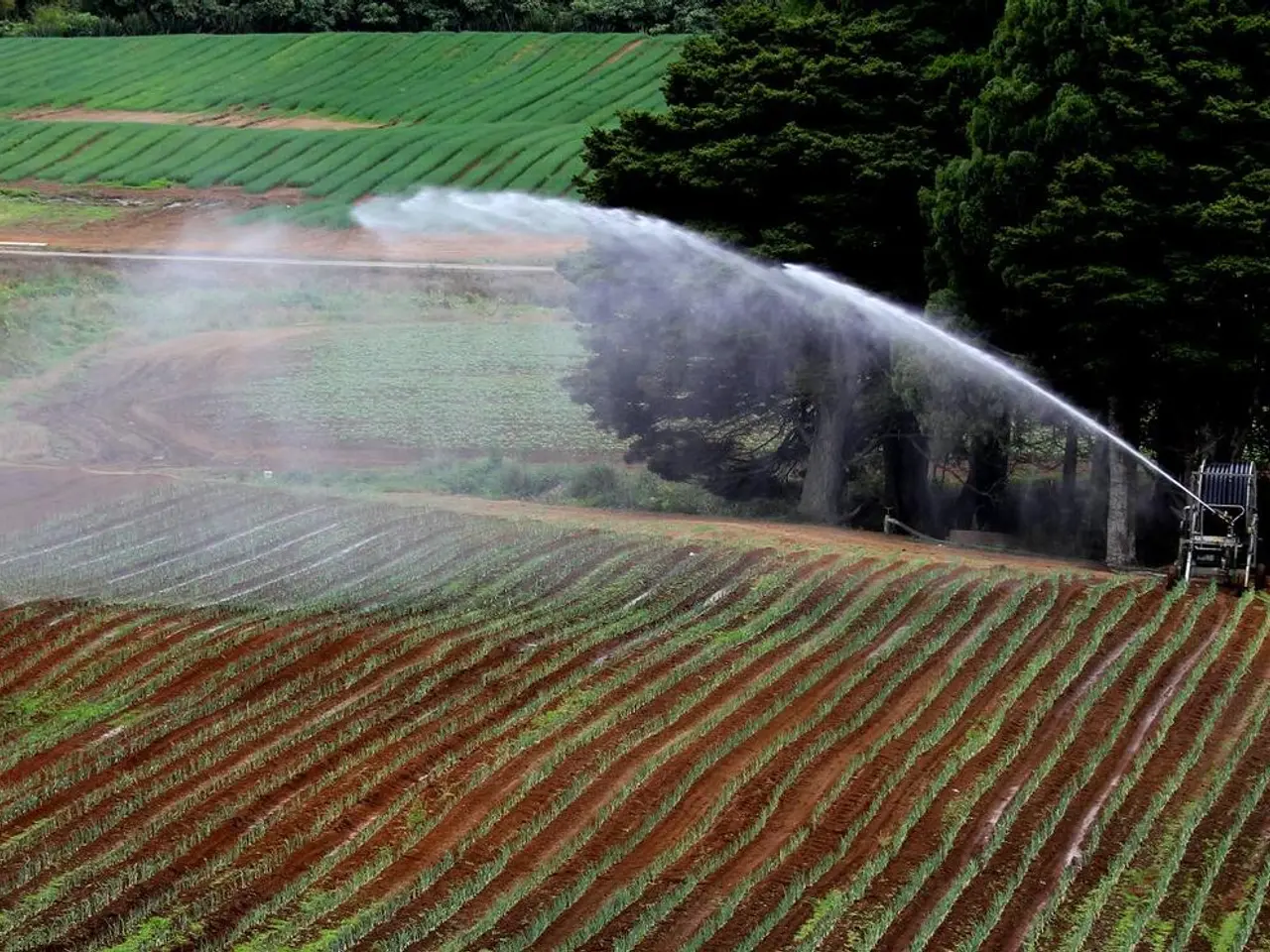Strategies for Boosting Agricultural Well-being among Indian Farmers
Indian agriculture is undergoing a significant transformation, with the adoption of technology and modern farming techniques playing a crucial role in managing green capacity and benefiting farmers. This shift is essential for addressing the challenges faced by farmers, such as low incomes, fluctuating crop prices, poor infrastructure, and climate-related issues.
Enhancing Agricultural Infrastructure
The government is making substantial investments through schemes like the Agricultural Infrastructure Fund (AIF) and Pradhan Mantri Kisan Sampada Yojana (PMKSY) to modernize storage, processing, transportation, cold chains, and market linkages. This not only reduces post-harvest losses but also improves supply chain efficiency, providing farmers with better market access and reduced wastage.
Providing Robust Financial Support
To strengthen farmers’ financial resilience, modernized Minimum Support Price (MSP) systems with dynamic pricing, expanded crop insurance (weather-linked and satellite-backed for quick claims), and direct income support schemes such as PM-Kisan are being implemented. These measures help stabilize income and reduce distress from market fluctuations and climatic risks.
Promoting Technology Adoption and Digitalization
Integration of AI, drones, satellite technology, blockchain, and digital platforms like the Digital Public Infrastructure (DPI) and AgriStack is creating a unified digital ecosystem for agriculture. This enables precision farming, real-time market data, quick insurance claims, and access to government schemes, thereby enhancing productivity and transparency.
Farming Education and Capacity Building
Training and extension services for farmers on best practices, integrated pest management, eco-friendly farming, and mechanization improve farming efficiency and sustainability. Subsidized farm mechanization aids this transition, reducing labor burdens and supporting climate-smart agriculture.
Encouraging Sustainable and Climate-Resilient Practices
Programs promoting micro irrigation, organic farming clusters, crop diversification, and eco-friendly pest management enhance resource use efficiency, soil health, and resilience to climatic stresses. These are vital for long-term profitability and environmental sustainability.
Together, these integrated strategies aim to improve farmer incomes, reduce risks, modernize agriculture, and build a sustainable agricultural ecosystem in India by 2025 and beyond. Government-funded schemes and policy reforms are central to driving these changes at scale.
The MSP structure in India ensures farmers receive a fair price for their produce, protecting them from price fluctuations. Precision farming, using GPS, robots, and sensors, enables data-driven decisions about resource use and returns. Adopting standard-making practices can help farmers reduce their dependence on harmful synthetic chemicals, improve soil condition, and increase profits.
Organizing standard programs can improve farmers' knowledge and skills in areas such as crop management, post-harvest handling, and eco-friendly farming. The agricultural sector in India is a significant part of the economy, providing livelihoods for millions.
Financial support and accessible credit are crucial for Indian farmers, with the government encouraging the provision of low-premium advances and yield affirmation plans. Capacity building and high-level training can help farmers access electronic resources, including government plans, market plans, and agricultural developments.
Encouraging farmers to focus on crop diversity can help manage market risks and yield dissatisfaction, enhance soil quality, and reduce pest infestations. Building more capable water framework structures, modern storage facilities, and improved road networks can help farmers manage their produce and reduce post-harvest disasters.
Green extension associations and NGOs play a crucial role in providing farmers with the latest information, guidance, and updates on various agricultural issues. Robotization of farm equipment like work vehicles, specialists, and seeders can lessen the labor intensity of Indian farming, making it faster and more cost-effective.
Crop security plans can help reduce the financial risks associated with natural disasters like floods, dry seasons, or unseasonal precipitation for Indian farmers. Sustainable farming practices such as common farming, agroforestry, and crop extension protect the environment, reduce input costs, and improve soil quality.
In conclusion, these strategies, backed by government support and policy reforms, are paving the way for a more sustainable, resilient, and prosperous agricultural future for India.
- Investments in technology will help enhance productivity and transparency through the integration of AI, drones, satellite technology, blockchain, and digital platforms in the agricultural sector (Promoting Technology Adoption and Digitalization).
- The adoption of modernized Minimum Support Price (MSP) systems with dynamic pricing, expanded crop insurance, and direct income support schemes will help farmers stabilize their income and reduce distress from market fluctuations and climatic risks (Providing Robust Financial Support).




